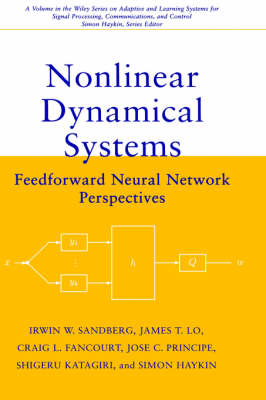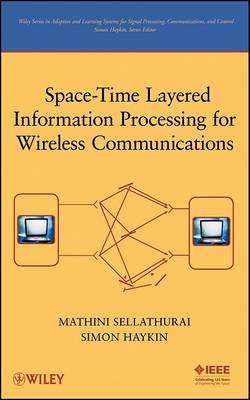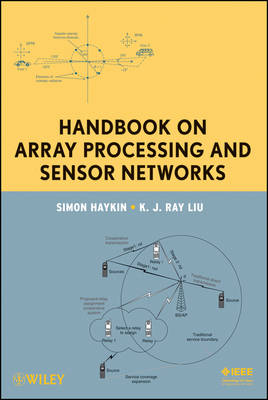Adaptive and Cognitive Dynamic Systems: Signal Processing, Learning, Communications and Control
9 primary works • 12 total works
Book 20
Book 21
Nonlinear Dynamical Systems
by Irwin W. Sandberg, James T. Lo, Craig L. Fancourt, Jose C. Principe, Shigeru Katagiri, and Simon Haykin
Moving from an introductory discussion of the different aspects of feedforward neural networks, the book then addresses: Classification problems and the related problem of approximating dynamic nonlinear input-output maps The development of robust controllers and filters The capability of neural networks to approximate functions and dynamic systems with respect to risk-sensitive error Segmenting a time series It then sheds light on the application of feedforward neural networks to speech processing, summarizing speech-related techniques, and reviewing feedforward neural networks from the viewpoint of fundamental design issues. An up-to-date and authoritative look at the ever-widening technical boundaries and influence of neural networks in dynamical systems, this volume is an indispensable resource for researchers in neural networks and a reference staple for libraries.
Book 23
Other chapters cover:* An algorithm for the training of feedforward and recurrent multilayered perceptrons, based on the decoupled extended Kalman filter (DEKF)* Applications of the DEKF learning algorithm to the study of image sequences and the dynamic reconstruction of chaotic processes* The dual estimation problem* Stochastic nonlinear dynamics: the expectation-maximization (EM) algorithm and the extended Kalman smoothing (EKS) algorithm* The unscented Kalman filter Each chapter, with the exception of the introduction, includes illustrative applications of the learning algorithms described here, some of which involve the use of simulated and real-life data. Kalman Filtering and Neural Networks serves as an expert resource for researchers in neural networks and nonlinear dynamical systems. An Instructor's Manual presenting detailed solutions to all the problems in the book is available upon request from the Wiley Makerting Department.
Book 30
Space-Time Layered Information Processing for Wireless Communications
by Mathini Sellathurai and Simon Haykin
Book 49
Correlative Learning – A Basis for Brain and Adpaptive Systems
by Zhe Chen, Simon Haykin, Jos J. Eggermont, and Suzanna Becker
Book 55
Adaptive Signal Processing – Next Generation ons
by Tulay Adali and Simon Haykin
Book 57
Book 63
Handbook on Array Processing and Sensor Networks
by Simon Haykin and K. J. Ray Liu
Handbook on Array Processing and Sensor Networks provides readers with a collection of tutorial articles contributed by world-renowned experts on recent advancements and the state of the art in array processing and sensor networks.
Focusing on fundamental principles as well as applications, the handbook provides exhaustive coverage of: wavelets; spatial spectrum estimation; MIMO radio propagation; robustness issues in sensor array processing; wireless communications and sensing in multi-path environments using multi-antenna transceivers; implicit training and array processing for digital communications systems; unitary design of radar waveform diversity sets; acoustic array processing for speech enhancement; acoustic beamforming for hearing aid applications; undetermined blind source separation using acoustic arrays; array processing in astronomy; digital 3D/4D ultrasound imaging technology; self-localization of sensor networks; multi-target tracking and classification in collaborative sensor networks via sequential Monte Carlo; energy-efficient decentralized estimation; sensor data fusion with application to multi-target tracking; distributed algorithms in sensor networks; cooperative communications; distributed source coding; network coding for sensor networks; information-theoretic studies of wireless networks; distributed adaptive learning mechanisms; routing for statistical inference in sensor networks; spectrum estimation in cognitive radios; nonparametric techniques for pedestrian tracking in wireless local area networks; signal processing and networking via the theory of global games; biochemical transport modeling, estimation, and detection in realistic environments; and security and privacy for sensor networks.
Handbook on Array Processing and Sensor Networks is the first book of its kind and will appeal to researchers, professors, and graduate students in array processing, sensor networks, advanced signal processing, and networking.
Book 65
Multiple-Input Multiple-Output Channel Models
by Nelson Costa and Simon Haykin
This groundbreaking book: * Shows how wireless communication systems increasingly use cognition to enhance their networks * Explores how cognitive radio networks can be viewed as spectrum supply chain networks * Derives analytic models for two complementary regimes for spectrum sharing (open-access and market-driven) to study both equilibrium and disequilibrium behaviors of networks * Studies cognitive heterogeneous networks with emphasis on economic provisioning for resource sharing * Introduces a framework that addresses the issue of spectrum sharing across licensed and unlicensed bands aimed for Pareto optimality Written for students of cognition, communication engineers, telecommunications professionals, and others, Fundamentals of Cognitive Radio offers a new generation of ideas and provides a fresh way of thinking about cognitive techniques in order to improve radio networks.
Impact of Attention on Perception in Cognitive Dynamic Systems
by Ashkan Amiri and Simon Haykin
This book provides insights into developing better algorithms for machine learning, artificial intelligence and signal processing. The authors build mainly on two topics: Cognitive Dynamic Systems (CDS), which is a well-established paradigm originated in the Cognitive Systems Lab of McMaster University, and attention, an essential cognitive function the neurobiological root of which is assumed to be the reentry of neuronal firings through feedback connections. This book focuses completely on the perceptual part of a CDS, or in short, the "perceptor", which is the part responsible for visualizing the environment. In this regard, inspired by the mammalian brain, an important step has been taken to redesign the perceptor and therefore improve its functionality in light of "attention", a function that is essential to cognition. The authors demonstrate how the end result is an improved performance for the perceptor in the face of uncertainties and better separation of relevant information from irrelevant information.
The book presents the cognitive network as a system of systems. The primary examples of cognitive networks presented are cognitive radar networks and cognitive radio networks (both open-access and market-driven). The book is supported by seven appendices covering, among others, probability theory, Bayesian inference, the method of stochastic gradients, and Fisher information, all of which are applicable to multiple sections in the book.




